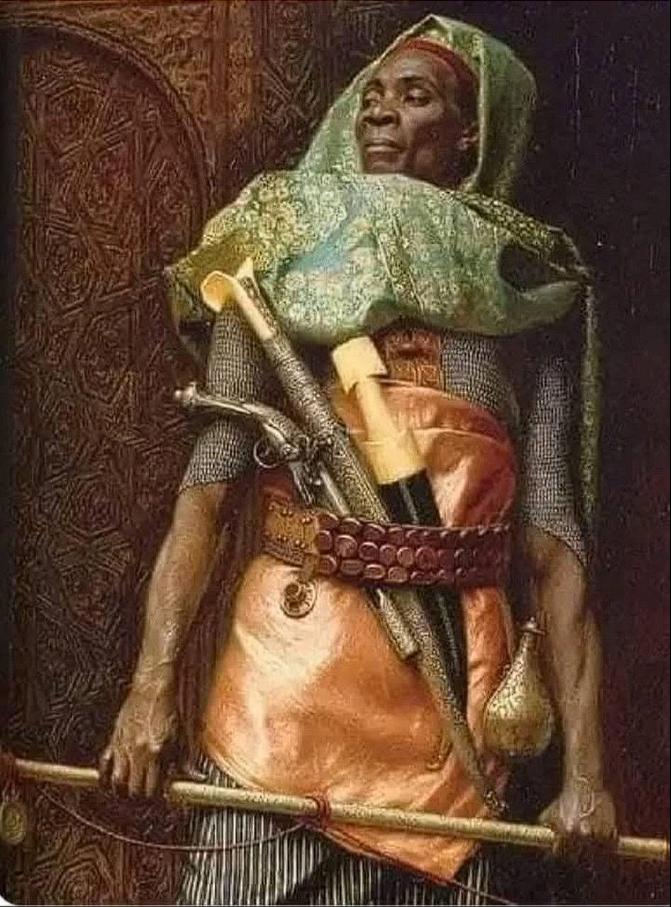Who Were the Moors?
Origins and Expansion
The Moors were a group of North African people who played a significant role in shaping the history of Spain and Europe. In 711 AD, they crossed the Strait of Gibraltar from Morocco, swiftly conquering most of the Iberian Peninsula. Their rule lasted for nearly 781 years, ending in 1492 with the fall of Granada.
A Multi-Cultural Society
During their reign, the Moors created a society that blended North African, Arab, and Spanish influences. They introduced new governance systems, encouraged scientific exploration, and promoted religious tolerance, making their period of rule one of the most intellectually progressive in medieval Europe.
The Decline of Moorish Rule
Over the centuries, Christian kingdoms in Spain gradually pushed back Moorish rule in a long campaign known as the Reconquista. By 1492, the Catholic Monarchs, Ferdinand and Isabella, captured Granada, marking the end of Moorish rule in Spain. However, their influence remained deeply embedded in Spanish culture, science, and architecture.

Contributions of the Moors to Science and Knowledge
Mathematics and Arabic Numerals
One of the most significant contributions of the Moors was the introduction of Arabic numerals to Europe, replacing the cumbersome Roman numeral system. This new numerical system, which included the concept of zero, revolutionized mathematics, making calculations easier and more efficient.
Medical Advancements
The Moors were pioneers in medicine, developing treatments for diseases and creating medical textbooks that were widely used across Europe. Their hospitals and medical schools in cities like Córdoba and Seville set high standards for patient care, surgery, and pharmacology.
Astronomy and Timekeeping
Moorish scholars were also skillful astronomers, refining techniques to measure time, predict eclipses, and determine the positions of celestial bodies. Their observatories in Spain contributed greatly to the understanding of the stars, influencing later European discoveries during the Renaissance.
The Architectural Legacy of the Moors
The Alhambra: A Masterpiece of Islamic Art
One of the most stunning legacies of the Moors is the Alhambra in Granada, an architectural marvel that remains one of the most visited monuments in Spain. This palace complex, with its intricate tilework, detailed stucco carvings, and elegant courtyards, reflects the Moors’ advanced engineering and artistic vision.
Mosques, Universities, and Public Buildings
The Moors built numerous mosques, universities, and public baths, many of which were later converted into cathedrals or palaces but still retain their Islamic architectural elements. The Great Mosque of Córdoba, for example, remains one of the most impressive structures in Europe, showcasing the Moors’ architectural brilliance.
Bricklaying and Urban Development
Moorish builders introduced advanced bricklaying techniques, allowing for stronger and more aesthetically pleasing structures. They also developed sophisticated irrigation systems that helped cities flourish, turning arid lands into thriving agricultural hubs.
Moorish Influence on Agriculture and Botany
Introducing New Crops to Spain
The Moors played a crucial role in transforming Spanish agriculture by introducing crops such as oranges, lemons, rice, sugarcane, and almonds. Many of these remain staples in Spanish cuisine today.
Advanced Irrigation Systems
To support their agricultural advancements, the Moors engineered sophisticated irrigation systems, including aqueducts and underground water channels, which allowed for efficient farming even in dry regions. Some of these systems are still in use today.
The Art of Gardening
Moorish gardens, known for their lush greenery, geometric designs, and flowing water features, became symbols of paradise on earth. The Generalife gardens in Granada stand as a testament to their expertise in landscape architecture, influencing garden design across Europe.
The Cultural and Intellectual Legacy of the Moors
Philosophy and Literature
The Moors translated and preserved many Greek and Roman philosophical texts, ensuring that classical knowledge survived the Middle Ages. These translations later played a key role in the European Renaissance.
Historical Writings and Documentation
Moorish scholars meticulously recorded historical events, creating extensive manuscripts that provide valuable insights into medieval history. Their historical texts remain a rich resource for researchers studying the era.
Linguistic Influence on Spanish
The Spanish language absorbed thousands of words from Arabic, many of which are still in use today. Words related to science, trade, and everyday life—such as algebra, azúcar (sugar), and aceite (oil)—originate from Arabic, reflecting the deep linguistic influence of the Moors.
Conclusion: A Lasting Legacy
The Moors’ contributions to Spain and Europe remain undeniable, shaping architecture, science, medicine, and culture in ways that continue to influence the modern world. Their advancements in mathematics, astronomy, and agriculture laid the foundation for Europe’s scientific progress, while their architectural wonders, such as the Alhambra and the Great Mosque of Córdoba, continue to inspire awe.
Though their rule ended centuries ago, the impact of the Moors endures, reminding us of a time when knowledge, innovation, and cultural exchange flourished in Spain.
